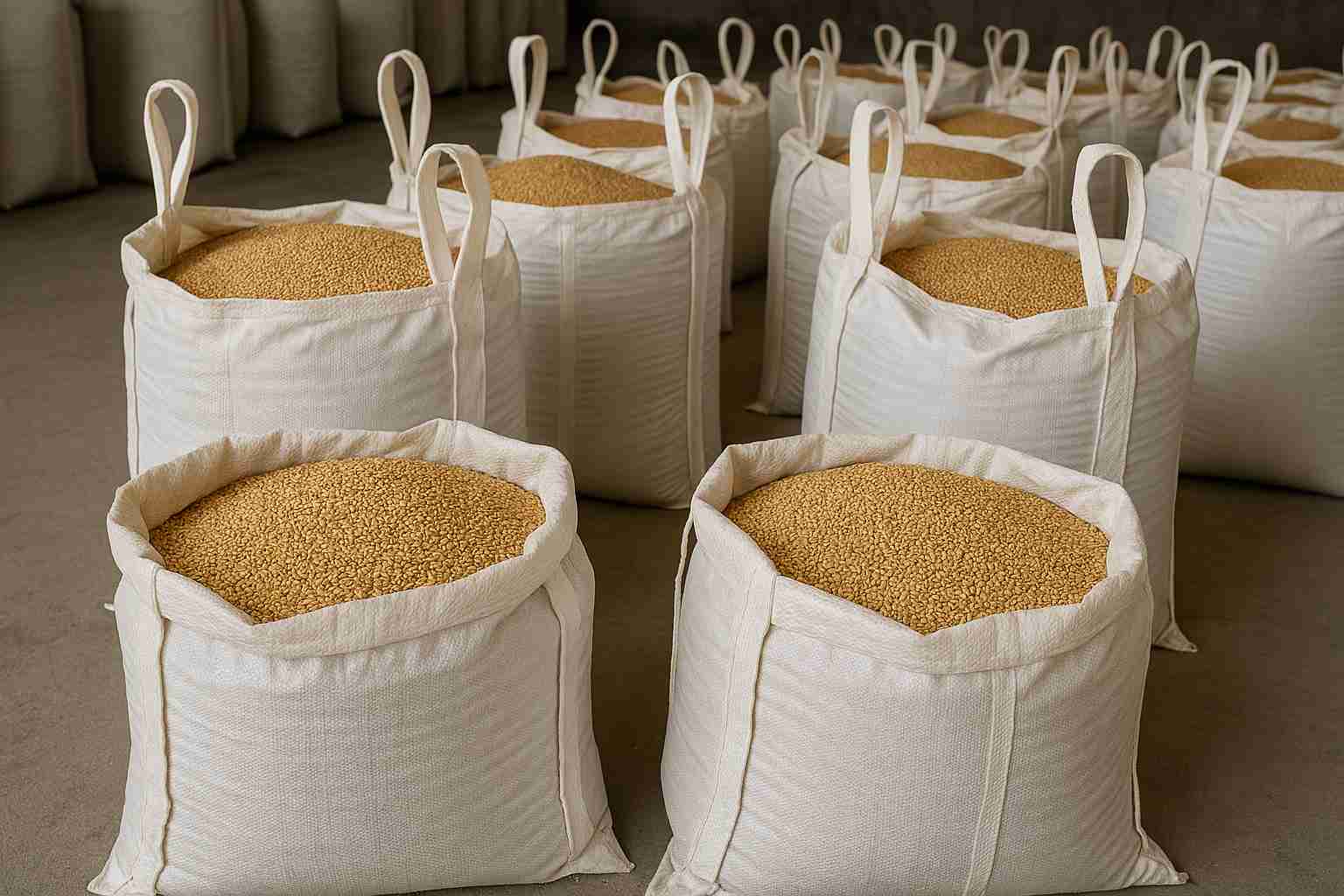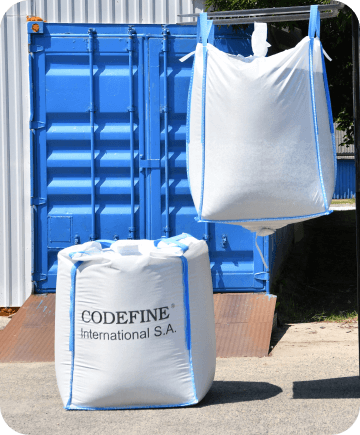Home » Posts Page » Blog » Products and Materials » Long-Term Grain Storage: How to Store Wheat, Corn, and Quinoa Safely

Grain products enjoy an extended shelf life, making them well-suited to long-term storage. However, steps need to be taken to preserve quality and prevent spoilage. When storing grain, you need to be mindful of potential threats. Moisture presents a significant risk to grain quality, both from ingress and humidity. Additionally, high temperatures can lead to premature spoilage of grains, while oxidation presents a further risk. Pests are another common threat you’ll need to consider when storing grains.
When stored in optimal conditions, grains can be kept for many years without any major impact to nutritional quality. From maintaining the right moisture levels to ensuring storage spaces are well-ventilated, there are many steps you can take to extend the shelf life of stored grains.
Moisture and humidity are major concerns for grain storage. If you want to preserve quality, you’ll need to ensure that the moisture content of grains is carefully managed. When storing wheat, you should be aiming to maintain a moisture content of 14-20%. For corn, an ideal moisture content of 15-20% should be observed. For grains like quinoa, you’re looking at lower moisture levels below 12%.
To prevent mold and bacterial growth, first, make sure that grains are properly dried before entering storage. Keeping moisture levels low ensures safe storage, keeping bacterial growth at bay and staving off insects.
Ideally, grains should be stored at a temperature of 40-120 degrees Fahrenheit, although this varies between grain type. For wheat and corn, aim for temperatures between 40 and 50 degrees Fahrenheit. For grains like quinoa, aim for storage temperatures of around 75-80 degrees Fahrenheit.
Aeration systems are particularly useful for maintaining cooler temperatures in silos and other storage structures. By keeping temperatures low, it’s easier to preserve grain quality for longer and prevent insect development.
Many different insect species pose a risk to grain stores, including several types of weevil and beetles. The latter can breed successfully at lower temperatures, making it important to properly monitor storage temperatures and humidity. Rats and mice are another common concern when storing grain. Rodents and insects can have a significant impact on grain storage operations, with pest control measures incurring additional costs. There’s also the issue of the spoilage and loss of grains themselves. Fortunately, keeping vermin in check is relatively simple.
An effective way of keeping insects in check is to use pesticides. This can be dispersed throughout your storage environment. Preventative chemicals can also be applied directly to grains after harvesting. For larger pests like rodents, traps are a successful.
Whether you’re looking to store wheat in bulk or want to extend the shelf life of corn in your kitchen, storage is important. Let’s take a look at some of the most popular storage options for grain below.
If you’re growing and harvesting grains on an industrial scale, silos and bulk storage bins are obvious choices. Silos are a good option for large-scale grain storage, offering reliable protection against the elements and pests. Steel constructions are particularly durable and withstand moisture well, while humidity and temperature levels can be easily maintained by installing things like aeration systems. Bulk storage bins are a good alternative if you’re looking for something smaller. They’re also cost-effective, making them a smart option if you’re after short-term grain storage.
If you’re looking for grain storage on a smaller scale, airtight containers and mylar bags are worth considering. Thanks to an airtight seal, these containers are ideal for long-term storage and offer protection against pests and contamination. Oxygen absorbers can also be added to these containers, protecting against oxidation and preventing premature storage. If you’re looking for home storage solutions, high-grade plastics and glass are the obvious choice of materials.
Grains are suitable for short-term freezing. Temperatures below freezing point are sufficient to kill off potential pests like insect eggs, rendering grains safe for long-term storage. After 48 hours, frozen grains are ready for storage. Ensure you’re using packaging like airtight containers, FIBC bags, mylar bags, and poly bags.
Similar steps can be followed when storing most types of grain. However, there are a few differences you’ll want to observe.
If you want to ensure wheat stores safely for as long as possible, avoid wheat flour and start with berries instead. Thanks to their tough outer shell, wheat berries are far more resilient than flour, maintaining quality and retaining nutritional value. You’ll also need to ensure you’re using high-quality containers to store wheat, with buckets and bulk bags being two popular options. Regular inspection of containers is essential. If you spot any signs of wear and tear, consider retiring containers and replacing them with new ones.
The nutritional value of wheat will begin to degrade over time. To prevent this, make sure you’re storing wheat in dry conditions at cool temperatures. Avoid storing wheat in containers made of materials like cardboard and use oxygen. You’ll also need to avoid storing what at high temperatures or humid conditions. To prevent moisture intrusion and contamination, always ensure that containers are properly sealed.
Corn is typically handled at a high moisture content, calling for more care when it comes to storage compared to other types of grain. After harvesting, processing should include dehydration to bring down the moisture content of corn before it goes into storage. Even after this, moisture content can remain high, so make sure the corn is leveled and properly aerated to prevent spoilage.
Different measures should be observed when storing corn for animal and human consumption. If storing it as animal feed, keep corn stored in a dry environment, avoiding high temperatures and direct sunlight. Standard pest control measures can be applied to keep vermin at bay, while raising containers can also help stave off pests. When storing corn for human consumption, similar measures can be observed, but you’ll need to ensure you’re using food-grade containers.
To ensure stored grains last for as long as possible, rigorous inspections are a must. Any damaged grains should be disposed of to prevent contamination from things like mycotoxins. For an extended shelf life, everything from temperature to moisture content needs to be carefully monitored and maintained.
To determine grain quality, regular assessment of moisture content is a must. Equipment like moisture meters are commonly used here. When it comes to certain grains, such as barley, it’s also vital to assess protein content. Near-infrared is a quick and reliable tool for measuring protein content and determines the suitability of grain for various uses.
With proper inspection, regular monitoring, and proactive maintenance, keeping grains fresh for as long as possible is relatively easy. However, to preserve grain quality, you’ll ultimately need to inveast in premium packaging solutions. At Codefine, you’ll find a wide range of packaging solutions well-suited to grain storage and the agricultural sector. Our industry-leading solutions lead the pack when it comes to innovation and sustainability, with everything from paper packaging to premium-grade bulk containers to choose from.
Looking for something specific? Why not take a closer look at our complete product range online today. Do you need to speak to someone about your requirements in more detail? Use the contact form to get in touch with the team.
